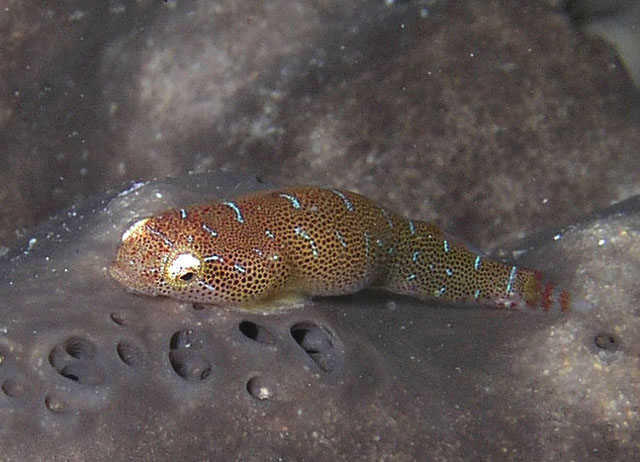| Gobiesocidae (Clingfishes and singleslits), subfamily: Cheilobranchinae |
| 5.5 cm TL (male/unsexed) |
|
demersal; marine; depth range 3 - 40 m |
| Southwest Pacific: New South Wales and eastern Victoria, Australia. |
|
Dorsal spines (total): 0-0; Dorsal soft rays (total): 5-6; Anal spines: 0-0; Anal soft rays: 4-6. Caudal fin rounded (Ref. 9002). Pelvic fins united into moderate-sized double sucking-disc, posterior half with a fleshy fringe (Ref. 9002). Greenish-yellow to orange with small scattered dark spots to larger red spots, variable in density; iridescent blue dashes or lines dorsally and across sides over head and body (Ref. 9002). |
| Adults usually on kelp, on which they deposit their eggs, which are guarded by the male, although the female is often present as well (Ref. 9002). Often on ascidians or sponges in deep water, probably depositing eggs on algae nearby (Ref. 9002). Often observed cleaning boxfishes, porcupine fishes and morwongs (Ref. 9002). |
|
Not Evaluated (N.E.) Ref. (130435)
|
| harmless |
Source and more info: www.fishbase.org. For personal, classroom, and other internal use only. Not for publication.

